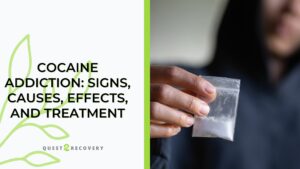A sense of urgency about treating heroin addiction has been recently fueled due to the spike in deaths attributed to heroin cut with fentanyl for sale on the street. The synthetic fentanyl, usually manufactured in clandestine labs in China, is enormously potent and deadly, and is responsible for the recent spate of overdose deaths in the U.S. The problem is that, once addicted to heroin, individuals desperate for their next fix are often not careful in sourcing their drug, and can unwittingly purchase fentanyl-laced heroin.
Recognizing the behavioral changes due to heroin addiction is key to an early intervention in treating the disease. Individuals who have developed a heroin addiction change in significant ways, in their behaviors, appearance, physical health, and their mental state. A heroin addiction is a horrific existence where everything you once valued is abandoned or destroyed through the addiction. Understanding what a heroin addict’s behaviors look like is imperative to identifying addiction in your loved one and getting them timely help.
What Are a Heroin Addict’s Behaviors?
In most cases, noticeable changes in behaviors become evident fairly early in the addiction process. The behaviors will vary in severity based upon how advanced the disease of addiction has become, as a singular focus—the next fix—becomes obsessive. A heroin addict’s behaviors may include:
- General malaise and apathy, loss of interest activities once enjoyed
- Mood swings
- Decline in academic or work performance
- Lying
- Stealing
- Excessive sleeping
- Avoiding eye contact
- Avoiding physical contact
- Withdrawal and isolation
- Secretive behaviors
- Hanging out with sketchy people
- Slurred speech
- Nodding off
- Jittery movements
- Deceptive or illegal acts
- Appears disoriented
- Hostile mood
The loved ones of the addict are hurt deeply by the lying and deception, and the theft of money and possessions, which the addict engages in as a means of finding resources to buy more heroin. The need to acquire and use the drug becomes compulsive.
Other Signs of Heroin Addiction
In addition to the behavioral signs of heroin addiction, there are other telltale red flags:
Physical changes
The physical changes of the addict may include:
- Loss of interest in hygiene or general appearance
- Loss of weight
- Grayish, pale complexion
- Sunken eyes
- Raspy voice
- Marks on arms, wearing long-sleeves in attempt to hide them
- Constricted pupils
- Constant sniffing
- Nosebleeds
- Runny nose, sniffing
- Burns on mouth or fingers
Other indicators of possible heroin addiction
- Missing painkiller prescriptions
- Missing shoelaces
- Missing spoons
- Finding paraphernalia such as foil, rubber bands, wax paper, small baggies, bottle caps, straws, razor blades, half-empty water bottles, rolled up pieces of paper or dollar bills
Treatment for a Heroin Addiction
Rejoice if you have managed to convince your loved one that they need help. Many addicts remain ambiguous about getting clean, not yet ready to give up their drug. If your loved one has agreed to get help, this is the typical three-pronged recovery process:
Detoxification
Initially, it is imperative that all the residual drug toxins and chemicals are purged from the body through the detox process. A medical detox provides supervision throughout the detox and withdrawal, which usually lasts about a week. During the detox, a detox team will provide medical interventions to assist with the withdrawal symptoms in order to provide the highest level of comfort possible. In some cases, Suboxone or methadone may be utilized in detox and early recovery.
Active treatment
The treatment phase of recovery involves a coordinated and customized treatment plan that includes psychotherapy, cognitive behavioral therapy, medication management, addiction education classes, recovery group meetings, inspiring guest speakers, relapse prevention planning, and adjunctive therapies such as yoga, mindfulness exercises, art therapy, and other complimentary therapies. Residential programs allow for an extended treatment period of one month to a year.
Continuing care
Continuing care is the important after care component of recovery, which includes sober living housing, ongoing outpatient therapy sessions, and medication management.
Heroin addiction can be successfully overcome, and a fulfilling life is truly possible. Do not hesitate to begin treatment as early as possible for the best recovery outcome.
Quest 2 Recovery Offers Comprehensive Treatment for Heroin Addiction
Quest 2 Recovery is a residential drug and alcohol treatment center located in north Los Angeles county in the quiet, peaceful community of Lancaster, California. Our effective program offers an intimate, family-like setting that is very conducive to healing and recovery. Once you have recognized the heroin addict’s behaviors and desire to help them, finding a responsive, tailored approach like Quest 2 Recovery is key. At Quest 2 Recovery our treatment team is highly qualified and trained in helping someone navigate through the recovery process and acquire new, healthy behaviors and routines.
It takes time and patience to overcome a heroin addiction, but professional clinical treatment is the only way to succeed. It is not overstating to say that no one can recover from a heroin addiction without professional guidance and support. For more information about our customized treatment program, please contact Quest 2 Recovery today and begin your personal quest to a full recovery. Call us at (888) 453-9396.









